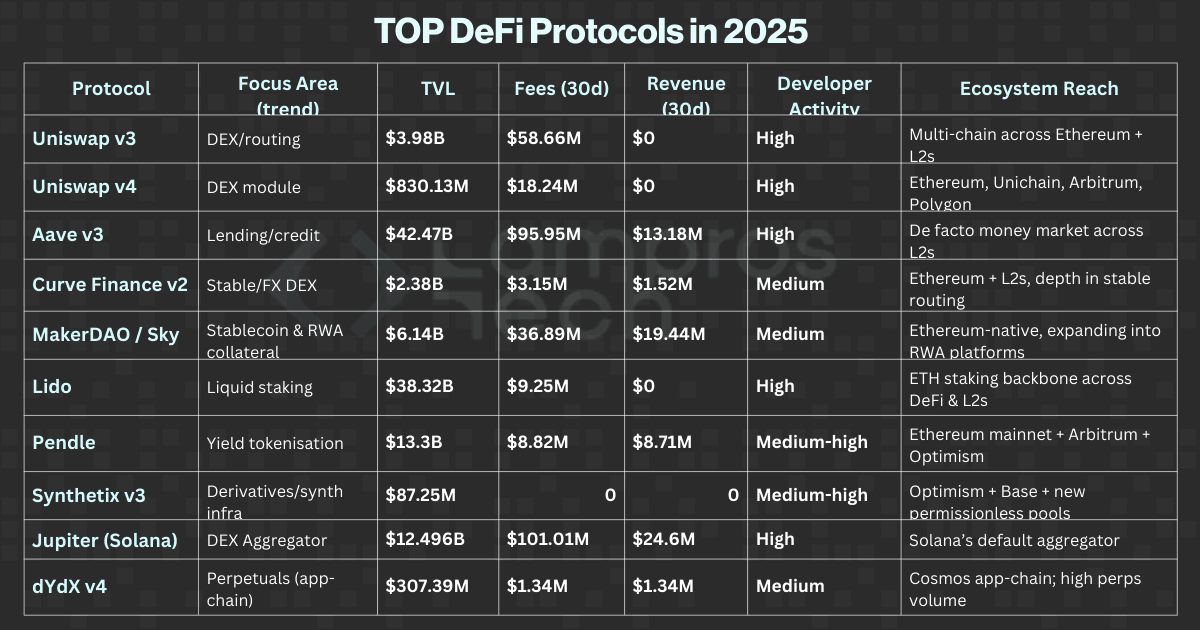Contact Us
If you're working on something real — let's talk.
Development & Integration
Blockchain Infrastructure & Tools
Ecosystem Growth & Support
© 2025 Lampros Tech. All Rights Reserved.
Published On Sep 22, 2025
Updated On Sep 22, 2025



Growth Lead
FAQs

The leading DeFi protocols in 2025 include Aave v3, Uniswap v4, MakerDAO (Sky), Lido, Pendle, Jupiter, Curve v2, dYdX, and Synthetix v3. Each plays a different role, from credit markets and liquidity hubs to staking, yield tokenisation, and derivatives infrastructure.

DeFi has matured into the financial backbone of Web3, securing hundreds of billions across lending, staking, swaps, and derivatives. Unlike the incentive-driven cycles of 2020, today’s leaders compete on efficiency, integrations, and liquidity stability, making DeFi a core settlement layer for the crypto economy.

As of September 2025, Jupiter dominates fee generation on Solana with ≈ $101M in monthly fees, while Aave leads in TVL ($42.4B) and sustainable revenue capture ($13.2M). Meanwhile, Lido anchors Ethereum security with over $38B in staked ETH.

Protocols are evaluated on five key metrics:

RWAs have become systemic in 2025. MakerDAO (Sky) leads with tokenised U.S. Treasuries and other assets backing DAI, generating ≈ $19.4M in monthly retained revenue. RWAs provide predictable yield streams, reduce reliance on token incentives, and attract institutional liquidity into DeFi.